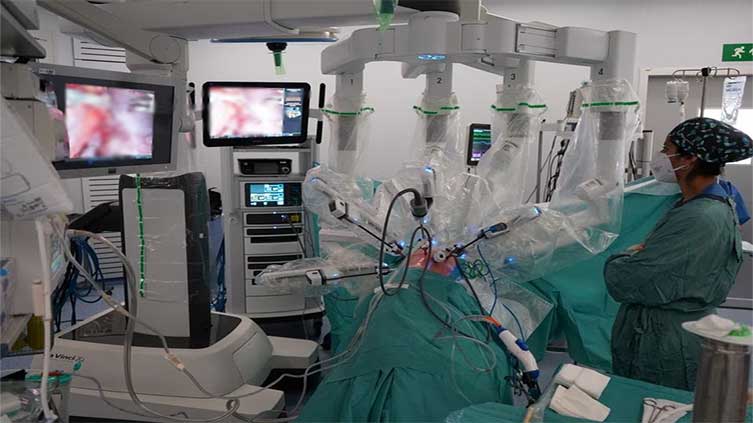Spanish hospital pioneers new lung transplant approach

Robot only cause three-inch incision whereas older approaches required 30-centimetre
MADRID (Reuters) - A Spanish hospital has carried out a lung transplant using a pioneering technique with a robot and a new access route that no longer requires cutting through bone, experts said on Monday.
Surgeons at Vall d'Hebron hospital in Barcelona used a four-armed robot dubbed "Da Vinci" to cut a small section of the patient's skin, fat and muscle to remove the damaged lung and insert a new one through an eight-centimetre (three-inch) incision below the sternum, just above the diaphragm.
Older approaches required a 30-centimetre incision. Although some hospitals are already using smaller incisions for lung transplants, this was the first time surgeons were able to confine the incision to soft tissues.
The new procedure is less painful for the patient, they said, as the wound closes easily.
"We believe it is a technique that will improve patients' life quality, the post-surgery period and reduce pain. We hope this technique will eventually spread to more centres," Albert Jauregui, head of the Thoracic Surgery and Lung Transplants Department at Vall d'Hebron, told reporters on Monday.
He added that to introduce the new lung, the organ was "deflated" in the operating theatre so that it could enter through the tight incision.
"It's a part of the body that has the advantage of having a very elastic skin, which gives room to widen the opening without having to touch a single rib," Jauregui said.
However, smaller cuts were also made to the side of the rib cage to accommodate the robot's arms and 3D cameras.
In time, Jauregui said, the technique could be applied to transplants involving two lungs, for which the same minor incision would suffice.
'ZERO PAIN'
The pioneering procedure, which until now has only been used to treat lung cancer, was performed on Xavier, a 65-year-old man who required a lung transplant due to pulmonary fibrosis.
Xavier said he benefited from the new technique.
"From the moment I regained consciousness and woke up from general anaesthesia, I had zero pain," he said.
Due to the incision's small size, Xavier only took paracetamol after the operation. Conventional lung transplants generally require post-surgery treatment with opioid painkillers.
Spain is a global leader in organ transplants, with an average of seven donors and 15 transplants per day in 2022, according to Spanish health ministry data.


